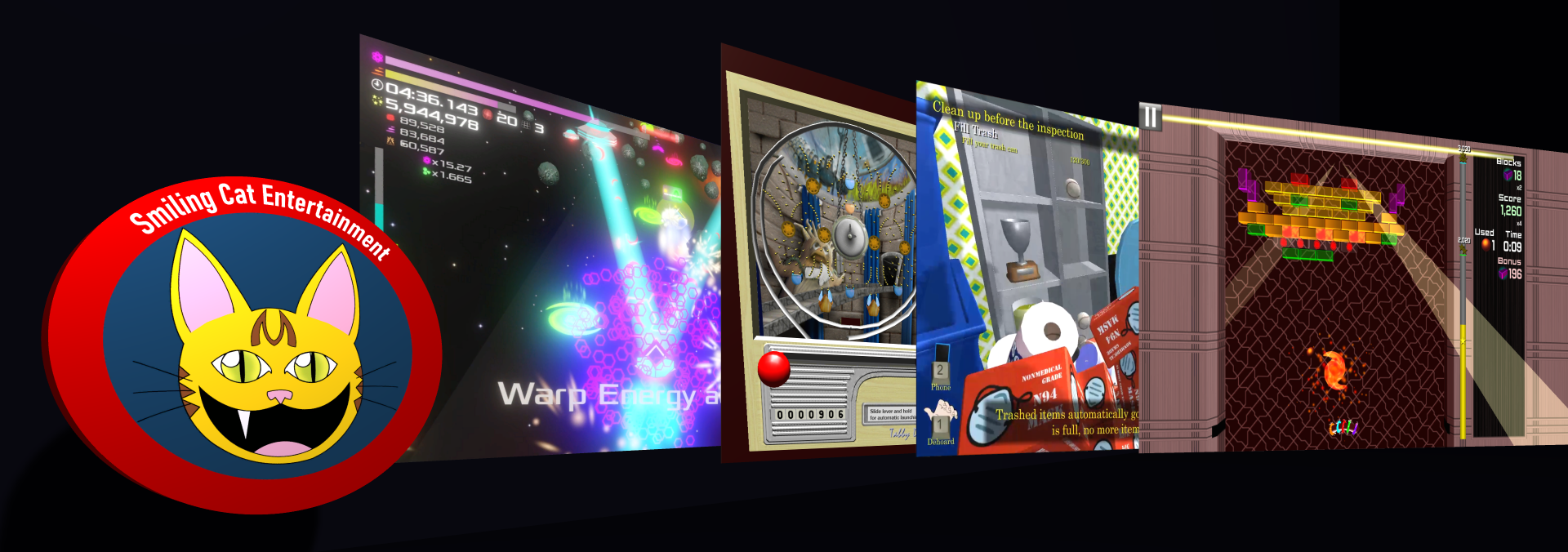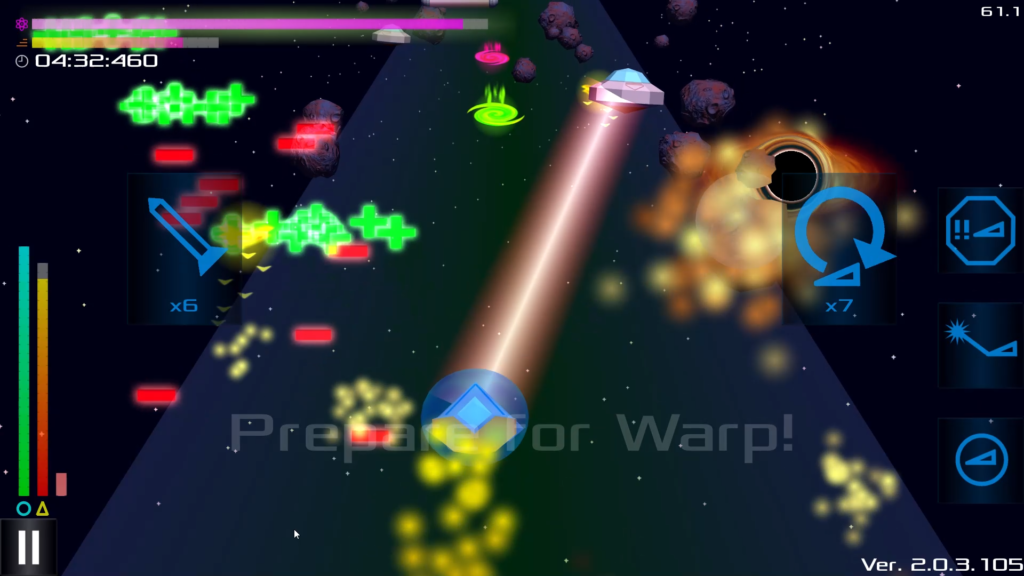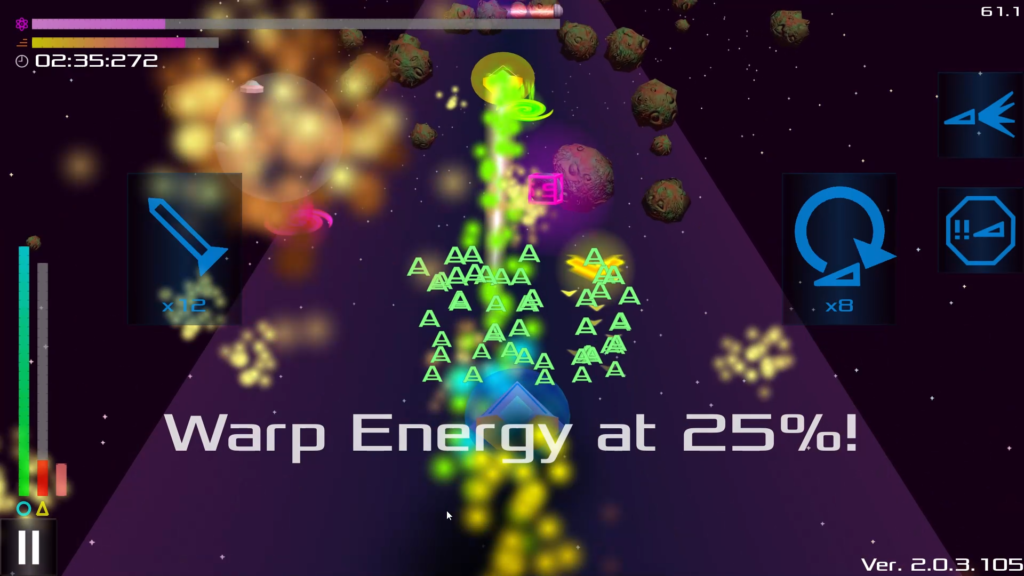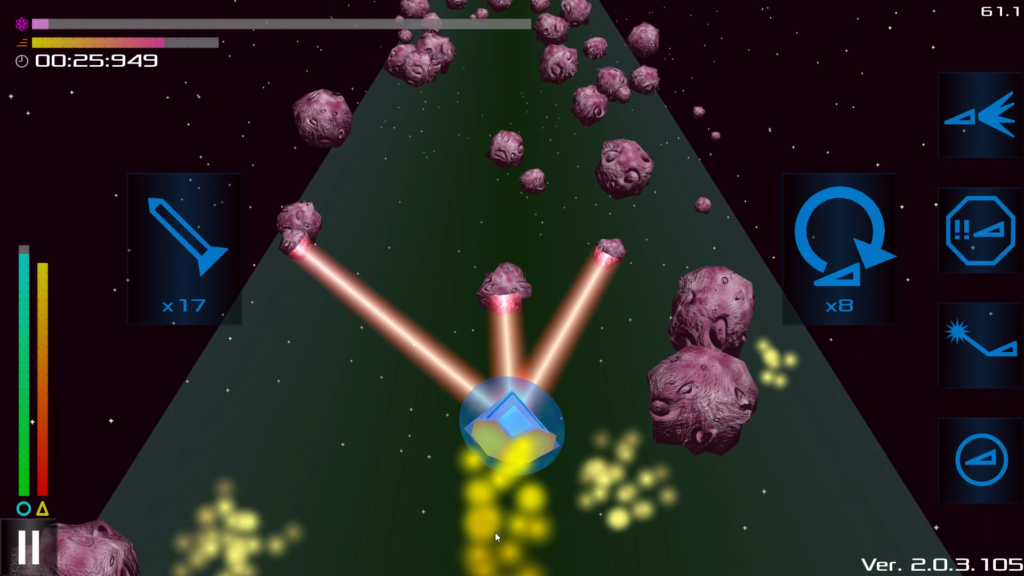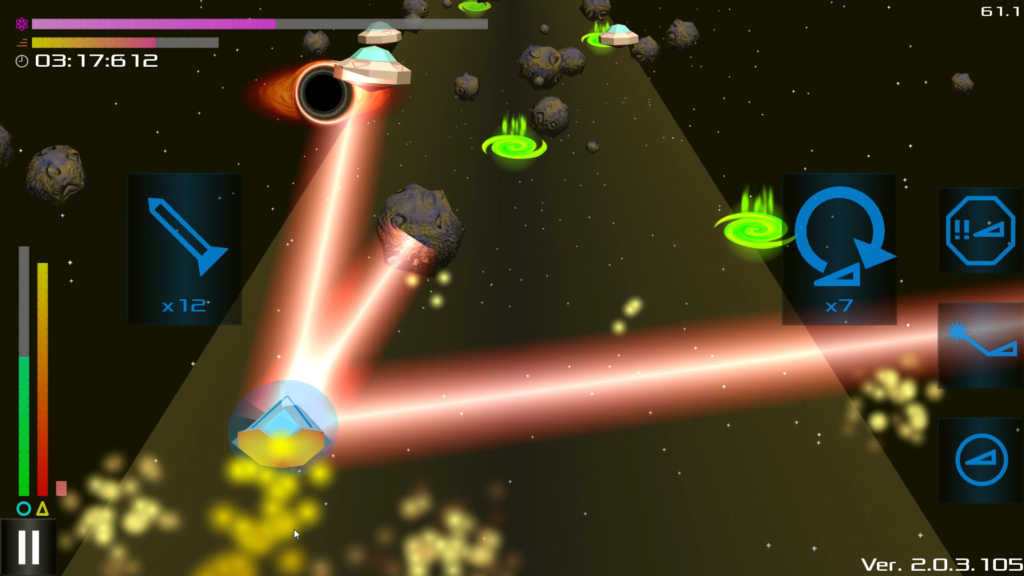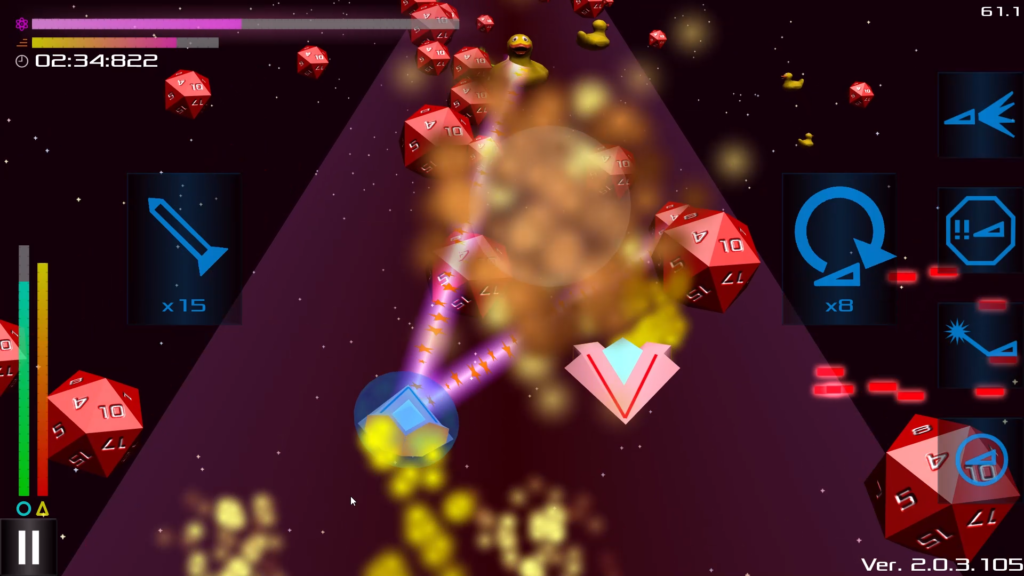If you’ve been here before, you may have noticed some changes around here. It was long time to put the old website theme to rest, and go with something a little more modern. I hope you like it.
In even more exciting news, Prepare For Warp has been approved for Early Access release on the Steam Store. Please wishlist and follow today!
Once again I let too much time pass between blog posts. However, that time has been put to good use. Breaking Block and Vintage Pachinko have both received their 64-bit updates. It was a lot more work than expected, since moving to 64-bit required moving to Unity’s IL2CPP system, which introduced some new performance mayhem into the updates. I worked to address the problem until both games performed the way that we are all used to.
I have been working with the folks over at COGG through their Prototype and Play program in order to help improve Prepare For Warp and make it the best game that it can be. It has come a long way from its initial 2013 release. It still retains the kernel of its gameplay, but it is now so much deeper, aesthetically pleasing, and crunchy.
For the visuals, I have been committing a LOT of shader abuse. The game was very much CPU-bound in the Android environment, so I had a lot of motivation to offload what I could to the GPU.
To that end, a lot of the the effects that would normally be accomplished via animation of Transforms or Texture properties, like the rotation of the asteroids, the shifting of the shield aegis and the conveyor belt movement of the speed zippers now occur within specialized shaders for those game elements.
Many elements now have more smooth gradients and transitions, such as lasers and the field, since the color gradient blending is now done in the shader rather than via texture sampling. This has a knock-on effect of reducing build size by eliminating the textures that were related to those elements.
Throwing over gradient and noise textures for shader code also allowed more variety in color theming for the levels without causing an explosion in the number of textures to be managed and included in the game.
Perhaps the best use of shader techniques can be seen in the updated black hole graphics (Credit for original shader code: Mario Gutierrez https://github.com/mariosubspace/unity-blackhole-shader). Yes, it took a lot to get that distortion effect running at 60fps on a Galaxy S5, but it was worth it (and it can be seen on the first and fourth screenshots above).
Of course, the graphics are not the only thing that has improved in Prepare For Warp. In the interest in keeping this post a reasonable length, I will save discussion about gameplay features, music, and other things for (near) future posts. It will make sure I have something to write about.
For now, if you are on the Android platform make sure to head over to the Google Play Store, download Prepare For Warp for free, and opt into the beta from the store page. In two weeks from now, you will be able to purchase Prepare For Warp from the Steam store for PC.
A quick word about Dehoarder 2 – do not worry, I have not abandoned this project. However, I did reach a point where I needed to work on something else for a while. Once the Prepare For Warp update winds down, I will resume work on Dehoarder 2 with renewed vigor.
Until next time, Game well and live well.
